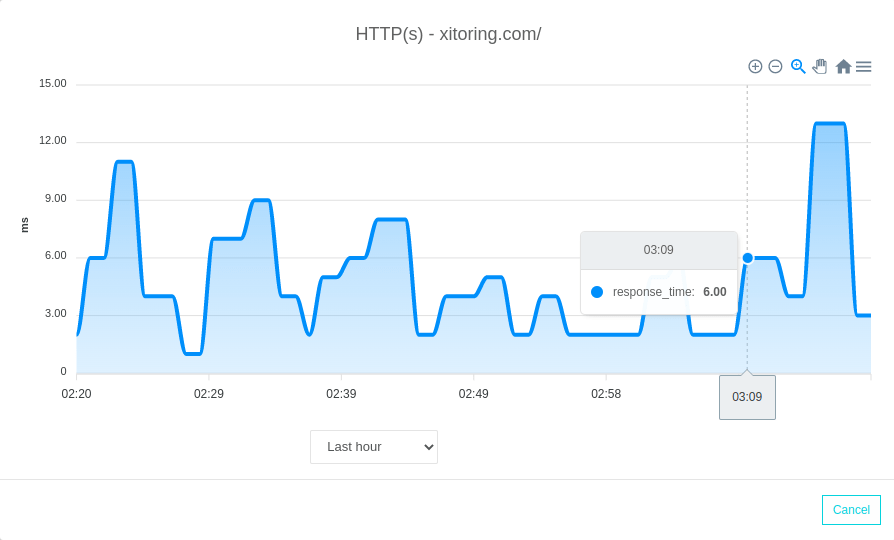
A Practical Guide for Minimizing Downtime in E-Commerce
Have you ever calculated the real cost of downtime on your e-commerce website? In a sector where seconds may spell the difference between a sale and a lost customer, understanding and minimizing downtime is key to success. This blog article digs into the technical aspects of e-commerce downtime, including tactics for reducing its incidence and the critical role of monitoring tools in this effort.
Understanding Downtime
Downtime refers to periods when your website is unavailable to users due to server problems, network difficulties, application faults, or scheduled maintenance. The consequences vary from lost revenue and tarnished reputations to lower search engine ranks and client confidence.
Strategies to Minimize Downtime
- Robust Hosting Solutions – Choosing a reputable hosting company is your first line of protection against downtime. Choose a hosting service that guarantees 99.99% uptime or greater and provides scalability to manage traffic spikes without crashing.
- Content Delivery Network (CDN) – Implementing a CDN may drastically minimize downtime by spreading your site’s content over a network of servers across the world. This not only speeds up content delivery but also provides redundancy, guaranteeing that if one server fails, another can take over easily.
- Effective Caching – Caching frequently visited material decreases server strain and allows your site to remain functioning during traffic surges. Browser and server-side caching are useful strategies for increasing site speed and robustness.
- Regular Maintenance and Updates – Maintenance and regular upgrades to software and plugins are critical for security and stability. Automating this procedure wherever feasible will assist guarantee that your site is always running on the most recent and secure versions of its dependencies.
- Load Balancing – Load balancing spreads incoming traffic among multiple servers, avoiding any one server from becoming a bottleneck. This not only improves website performance but also increases redundancy, resulting in decreased downtime.
The Impact of Monitoring Tools
Monitoring tools are necessary for reducing downtime since they provide real-time information about the health of your server and website. These technologies can detect faults before they cause considerable downtime, allowing for proactive problem management. Effective monitoring tools have the following key features:
- Uptime Monitoring: Continuously monitors if your website is accessible and working from multiple locations across the world.
Did you know Xitoring will monitor your websites and application from more than 15 locations around the world? Monitoring Locations
- Performance Monitoring: Monitors how well your website performs, finding slow-loading pages or resources that may suggest underlying problems.
- Security Monitoring: Alerts you to potential security issues, allowing you to avoid assaults that might bring your site down.
Did you know Xitoring is providing SSL Health Monitoring?
- Server Performance Monitoring: Ensures that vital server resources such as RAM, CPU, and hard drive are working properly, protecting server performance and customer experience.
Did you know that in addition to regular server resource monitoring, Xitoring can monitor Apache, Nginx, MySQL, and a variety of other server applications?
Investing in extensive monitoring tools enables e-commerce companies to notice and resolve issues quickly, often before they affect customers. This not only helps to reduce downtime, but it also promotes optimal website performance, improving user experience and confidence.
How can HTTP monitoring assist in this situation?
HTTP monitoring is an important component of website administration, especially for e-commerce platforms, where availability and performance directly affect consumer experience and income. HTTP monitoring, which is classified as Synthetic Monitoring, is the ongoing study of HTTP/HTTPS endpoints for availability, performance, and appropriate operation. Here’s how it may help you avoid downtime while maintaining optimal performance.
1. Real-time Availability Checks
HTTP monitoring solutions may run frequent checks to make sure your website is available to users. These tools can quickly notify you if your website becomes unavailable or if response times worsen dramatically by sending queries to it at regular intervals and monitoring the results. This enables swift action to restore service.
2. Performance Benchmarking
Monitoring the response time of your web pages helps in identifying performance degradation. An increase in load times can be a precursor to more severe problems that might lead to downtime. By identifying and addressing these issues early, you can prevent potential downtime or reduce its duration.
3. Error Detection
HTTP monitoring can detect error codes (like 500 Internal Server Error, 503 Service Unavailable, etc.) that indicate problems with your server or website’s backend. Early detection of these errors can prompt immediate investigation and resolution, preventing prolonged downtime.
With Trigger Management @ Xitoring you will have detailed triggers and alerts to the write person in your team!
4. Transaction Monitoring
For e-commerce sites, transaction monitoring can simulate typical user actions (like logging in, adding items to a cart, and checking out) to ensure these critical processes are functioning correctly. HTTP monitoring in this context can alert you to failures in these processes, allowing you to resolve issues before they affect a significant number of customers.
5. Content Verification
HTTP monitoring can also verify that the correct content is delivered to users. This can include checking for specific keywords or tags in the HTML response to ensure that a page is loading as expected. This is useful for detecting defacement, content errors, or unauthorized changes to your website.

6. SSL/TLS Certificate Monitoring
It checks if your website’s SSL/TLS certificates are valid and have not expired. Expired certificates can create downtime since browsers will advise visitors not to access your website, thereby rendering it inaccessible.
Monitoring Solution for E-Commerce
Xitoring is a complete monitoring tool that supports the operational needs of websites, particularly e-commerce platforms, by providing real-time information on their performance, availability, and security posture. Here’s how Xitoring can help minimize downtime and maintain optimal website performance:
Real-time Monitoring and Alerts
Xitoring enables continuous, 24/7 monitoring of your website’s availability and performance in 1-minute increments. It may alert you in real time to any issues that may cause downtime or poor user experiences, such as server outages, sluggish response times, or unexpected failures. This fast notice allows you to respond promptly to concerns before they become worse.
Global Monitoring Locations
With monitoring locations all around the world, Xitoring can evaluate your website’s performance and availability from various geographic regions. This is especially important for online stores that service a global consumer base, since it guarantees that your site is accessible and performs properly for all customers worldwide.
Detailed Reporting
Xitoring offers detailed reporting features that allow you to analyze your website’s performance over time. These insights can help you identify trends, such as peak usage times, which can inform capacity planning and scalability efforts. By understanding these patterns, you can preemptively address potential issues before they result in downtime.
Error Detection and Diagnosis
When Xitoring detects an error or performance issue, it provides detailed information that can help diagnose the problem. This includes error codes, response times, and other relevant data. Armed with this information, your IT team can quickly identify and resolve the underlying cause, minimizing the impact on your users.
SSL/TLS Certificate Monitoring
Xitoring also monitors the status of your SSL/TLS certificates, ensuring they are always valid and haven’t expired. This is crucial for maintaining the security and trustworthiness of your e-commerce platform, as expired certificates can deter users from making purchases and negatively affect your site’s SEO rankings.
Customizable Monitoring Intervals
You can configure how frequently Xitoring checks your website, allowing for more granular control over monitoring. This means you can set more frequent checks for critical pages or transactions, ensuring that any issues are detected and addressed as quickly as possible.
API and Integration Support
Xitoring supports integration with a range of tools and services, making it easier to incorporate monitoring data into your existing workflows and tools. This can enhance your team’s efficiency in managing and responding to issues.
With Xitoring, an e-commerce website where each minute of uptime means money and customer satisfaction gets a powerful monitoring solution. Xitoring supports organizations in minimizing website downtime, optimizing the performance of their website, and smoothing the shopping experience for customers with real-time alerts, in-depth performance analytics, and all-in-one monitoring. Ready to take control of your e-commerce website’s performance and minimize its downtime?
Understand real-time monitoring, global performance checks, and proactive issue resolution with Xitoring sign-ups today. Prevent downtime from costing your revenue and customer trust; begin monitoring with intelligence now!
